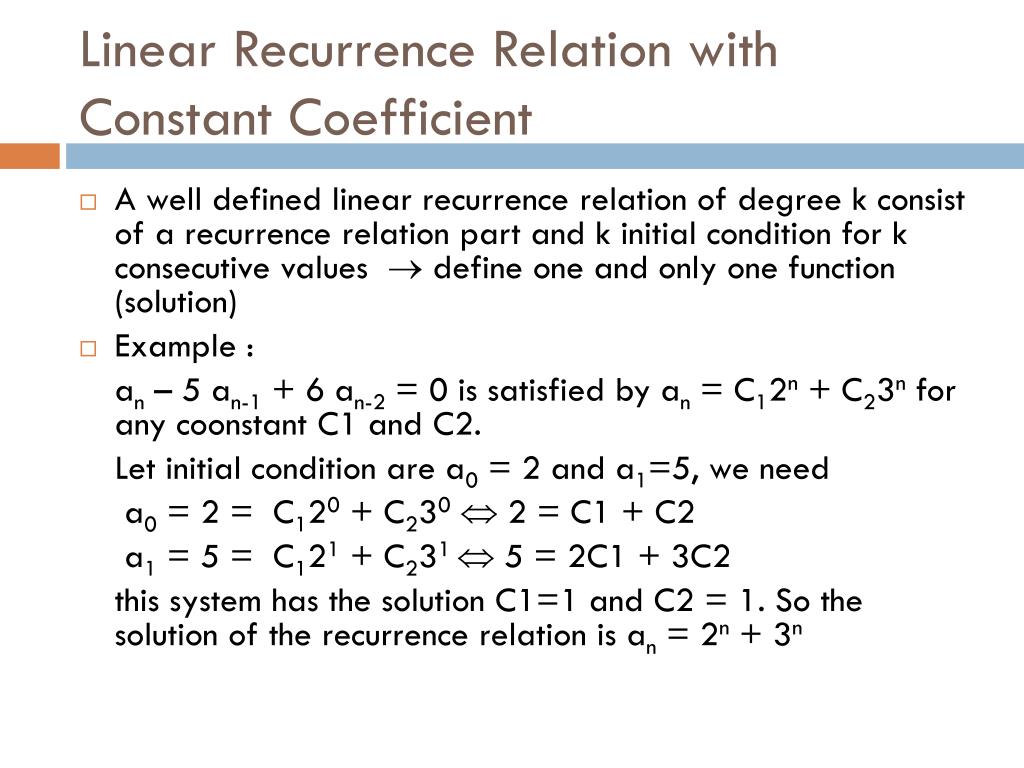

Such a permutation of the `n` numbers (people) where no number (person) is in his original position is called Our puzzle here puzzle asks for everybody to be sitting in a different seat. Removing that one case is just the number of permutations where at least `1` person is not sitting in their original seat. In how many ways can everybody be sitting in a new seat?īecause that just excludes the permutation where everyone is seated in the same seat as originally and so includes the case of most people in their original seats but some people in a new seat. In this variation, no one is left without a seat! When the music starts they all start walking round the circle of chairs but when it stops they all take a seat as quickly as they can.

Some Examples Derangements Suppose n people sit in a circle and they play a variation of Musical Chairs. However, sometimes all we have is a recursive definition and we do not know any direct formula for the general term of some series.Īlso, recursive definitions are often much easier to find than a direct formula and also lend themselves to a nice method of proof that the recursive definition is indeed correct. Indeed we need to find everynumber from `F(0)` up to `F(97)`before we can compute `F(100)`.The direct formula does not have this disadvantage. Though the recurrence formula is easy, we need to compute `F(99)` and `F(98)`which in turn need `F(97)` and so on.
#Linear recurrence relation calculator series
`F(n) = (Phi^n - (-phi)^n) / sqrt5` where `Phi = (sqrt5+1)/2` and `phi=(sqrt5-1)/2` Both the recurrence formula and the direct formula are enough to describe any term in the Fibonacci series butthe difference is seen is we need to find, say, `F(100)`. called the Lucas Numbers whereasĠ, 1 leads 1, 1, 2, 3, 5. This is called a recursive formulaor a recurrence relationsince it needs earlier terms to have been computed in order to compute a later term.Ī recurrence formula also needs some initial terms since at the moment we could start form any two numbers and getvery difference series:Ģ, 1 leads to 2+1=3, 1+3=4, 7, 11. If `F(n)` is the `n`^(th)term of this series then we have `F(n) = F(n-1) + F(n-2)`. Introduction to Recurrence Relations When we have a series or numbers, a formula for the general term makes it easy to compute any term directly.However, sometimes it is not easy to find such a formula but it is much easier to find how one term relatesto some of the earlier terms.įor instance, the Fibonacci numbers `0,1,1,2,3,5,8,13.` have a simple descriptionwhere each term is related to the two terms before it. section of questions to start your own investigations.

Contents of this page The icon means there is a You Do The Maths.


 0 kommentar(er)
0 kommentar(er)
